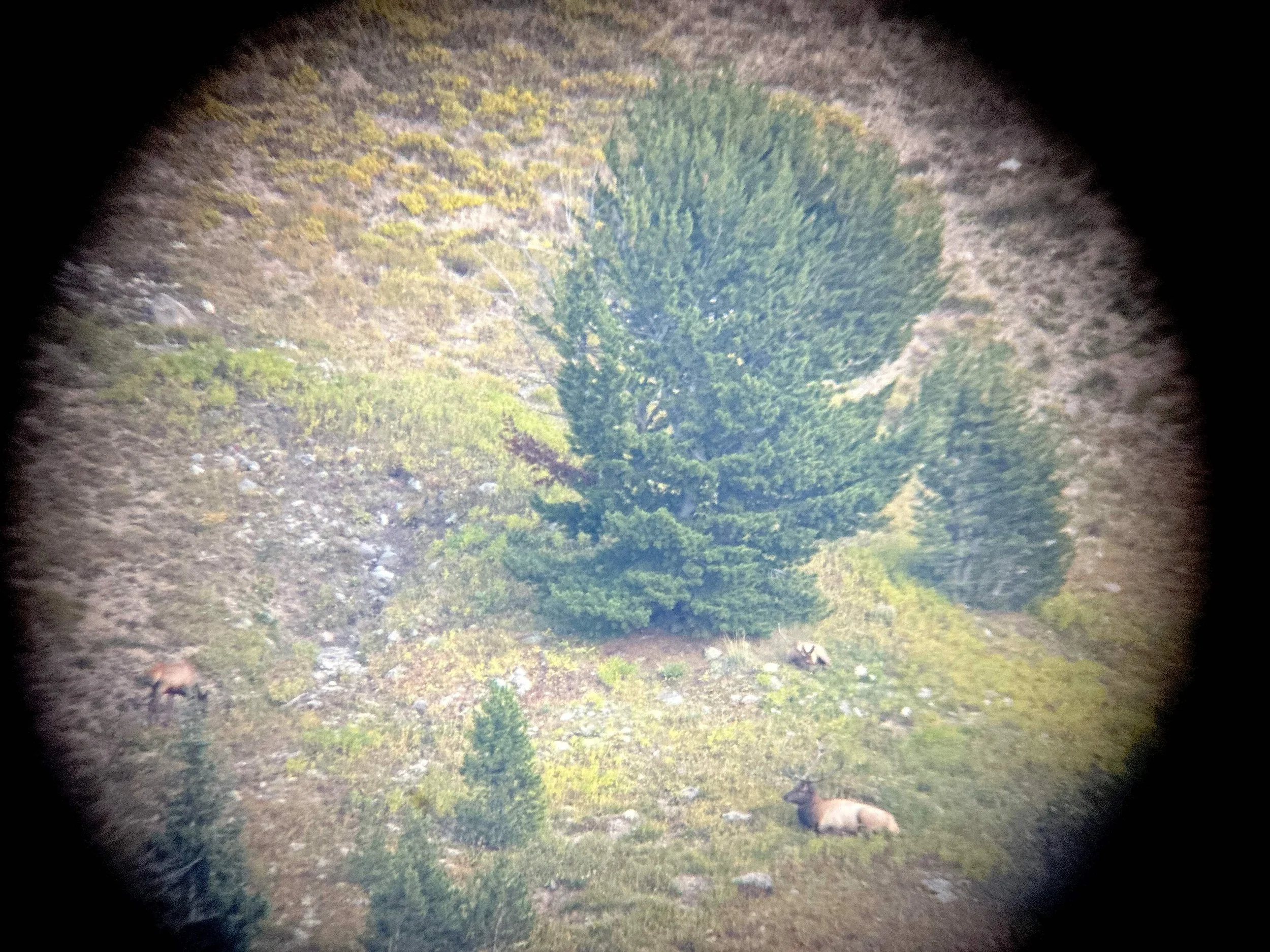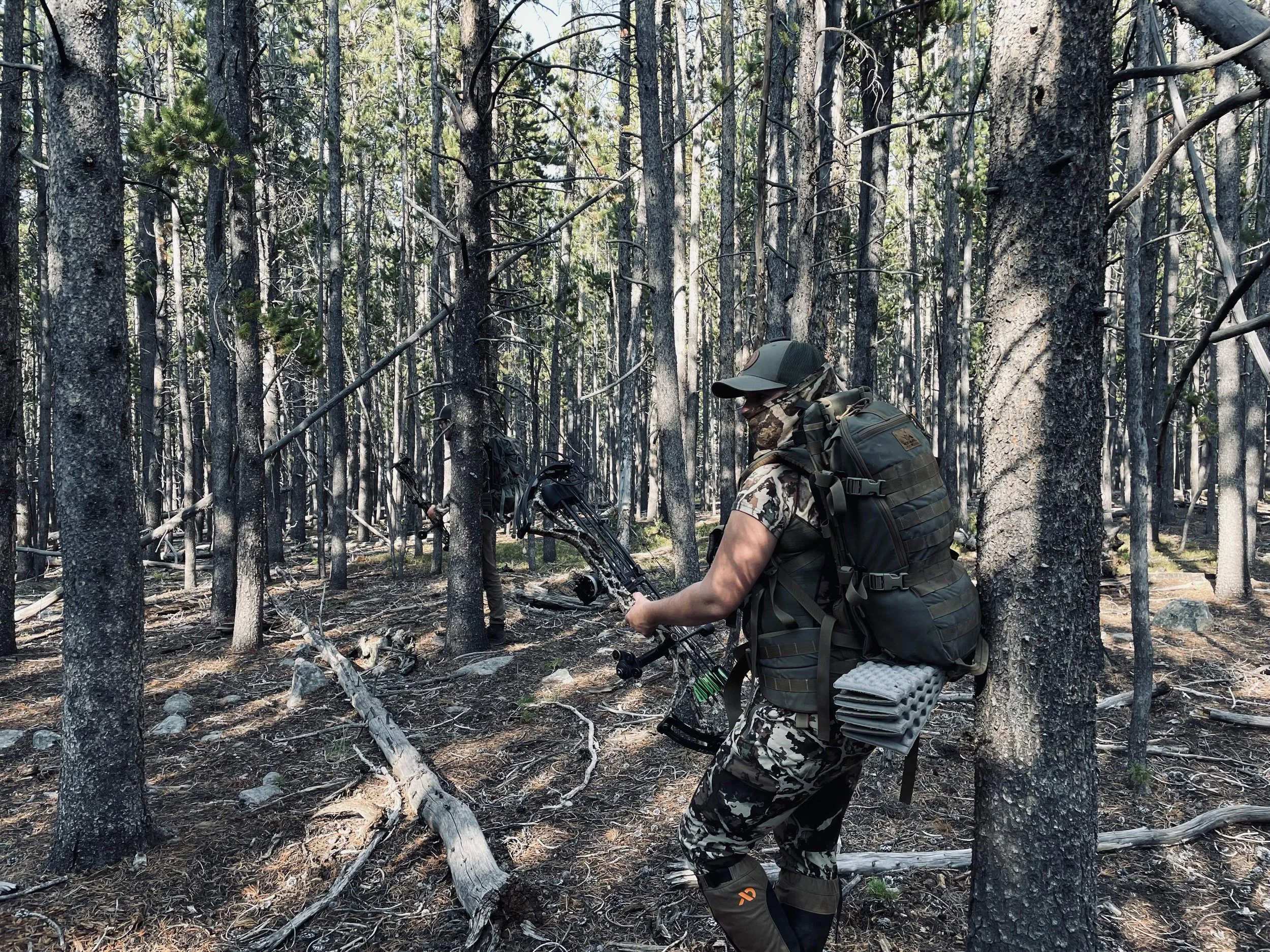Three Classic Elk Habitats For September Hunting
Embarking on a September archery elk hunt in the Rocky Mountain states of Colorado, Wyoming, Montana, or Idaho presents an intense blend of challenge and reward. Understanding the types of habitat where elk are likely to be found during this period is crucial for planning a successful hunt. Here, we delve into three key habitats to focus on: Aspen Groves, Meadow Edges, and Dark Timber Areas, each offering unique advantages and considerations for the archery hunter.
Aspen Groves
Photo of an aspen patch shortly before the author got into a herd of elk.
In early fall, aspen groves become a focal point for elk activity. The reason is twofold: these areas offer abundant food sources, including fresh grasses and forbs beneath the canopy, and the open understory provides relatively easy navigation for both elk and hunters. As the aspens begin to turn, painting the landscape with vibrant yellows and golds, they also signal a rich feeding ground for elk preparing for the upcoming winter. For the hunter, aspens are not just beautiful; they're strategic. The visibility in these areas can be advantageous for spotting elk from a distance, allowing hunters to use the terrain to approach undetected. Moreover, the auditory environment within an aspen grove—where even a gentle breeze can mask the sound of footsteps—can aid in a stealthy advance.
Meadow Edges
Bull elk bedded at the edge of an alpine meadow in September.
Meadows are the dining rooms of the elk world, especially at dawn and dusk. The edges where meadows meet forests, often referred to as "edge habitats," are particularly productive places to find elk. These transition zones offer the best of both worlds: open areas for feeding and dense cover for quick escapes. As elk are crepuscular, meaning they are most active during the twilight hours, positioning yourself along these edges in the early morning or late evening can be very effective. It's also worth noting that elk often use these meadows for mating rituals during the rut, which peaks in September. Recognizing signs of such activity, including wallows, rubs, and fresh tracks, can guide archers to the right spot at the right time.
Dark Timber Areas
An archery elk hunter waits for a bugling bull to come in through the dark timber.
Often just charged through recklessly by the less experienced, dark timber—dense stands of coniferous trees—serves as a refuge for elk, especially during the heat of the day or when pressured by hunters. These areas can be challenging due to limited visibility and the quiet, needle-covered ground that muffles sounds, making it easy for elk to move undetected. However, during the early archery season, elk may retreat to these cooler, shadowed forests after feeding in the open. Finding fresh sign along water sources or muddy trails leading into dark timber can indicate a nearby herd. Hunters willing to navigate these dense forests may find success by setting up along trails or near water holes, waiting for elk to come to them.
In conclusion, each of these habitats—aspen groves, meadow edges, and dark timber areas—offers distinct opportunities and challenges for the September archery elk hunter. By understanding the characteristics and appeal of these habitats to elk, hunters can tailor their strategies, increase their chances of encounters, and ultimately, enjoy the richness and complexity of hunting these magnificent animals in the Rocky Mountain states. Whether you're calling in a bull during the rut in a vibrant aspen grove, ambushing them at the edge of a lush meadow, or silently stalking through the cool darkness of the timber, the key is understanding the elk's patterns within these habitats. With patience, persistence, and a bit of luck, these landscapes can yield unforgettable hunting experiences.




